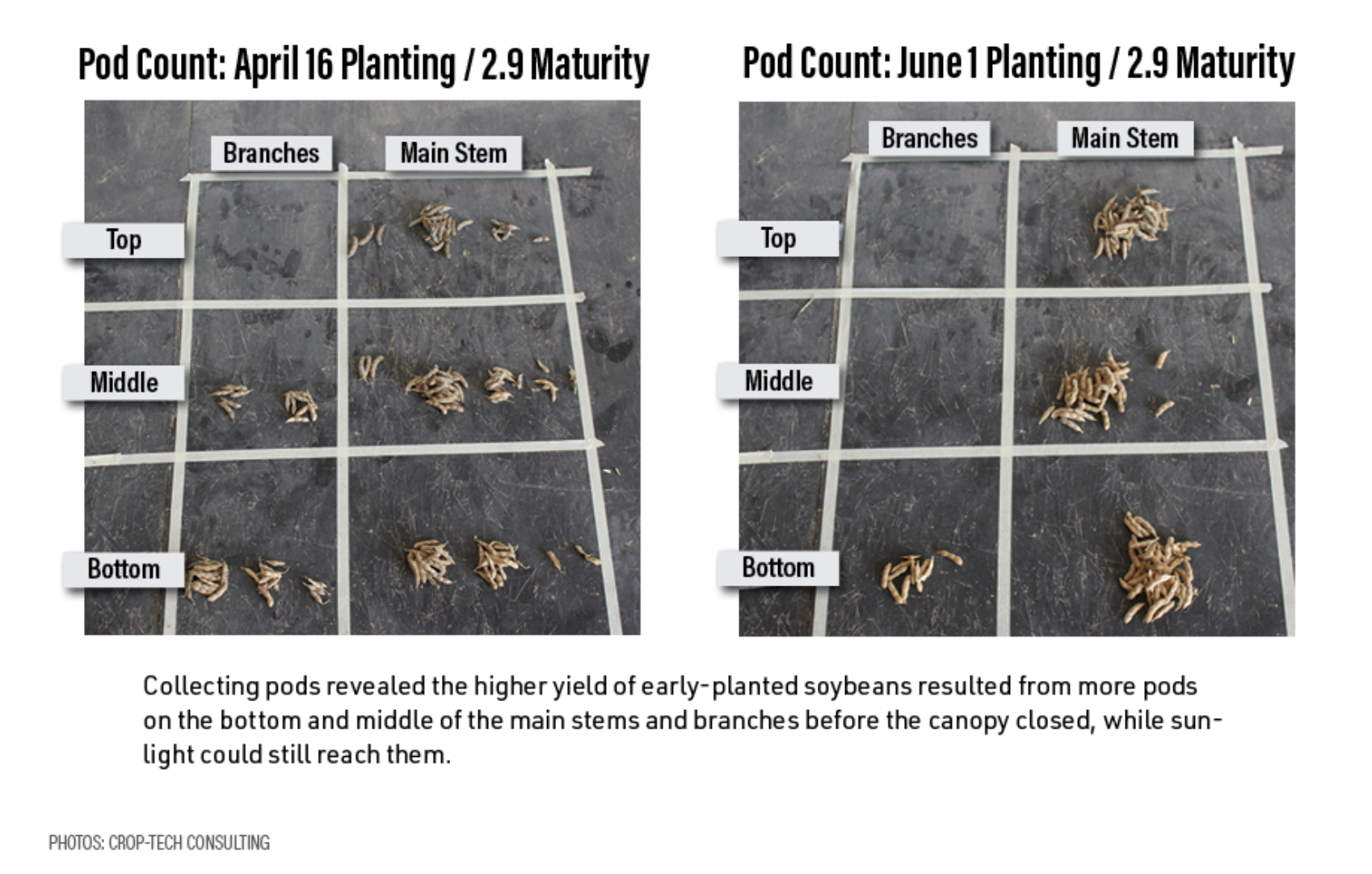Unspoken Truth About Pests: Why Planting Dates Play a Critical Role in Battling Pests Right Now
USFR Unspoken Truth About Pests Part 1- 07/23/22
Matt Miles isn’t your average farmer. With farmland nestled in the southeast corner of Arkansas, the Mississippi Delta has forced Miles to think outside the box in order to grow.
“One thing we've learned on our operation is you have to have enough equipment to hit those planting windows in a short period of time, because it seems to me like the weather has changed over my farming career,” says Miles, whose home farm is located in McGehee, Ark.
He says what typically was a 30-day window to get the corn crop in is more like 10 or 20 days now.
“But we were able to hit those windows this year to get the crop in early and ended up with really good emergence,” Miles says.
What are some of the biggest "Unspoken Truth About Pests?
With changes to planting weather and conditions, it’s prompted Miles to become even more aggressive in the field. That’s why the Arkansas farmer isn’t afraid to push the production limits with ideas that at times, he admits, are crazy.
“We set aside a budget for research, so we can take that portion of the money and say, ‘Okay, let's go chase something stupid,’” says Miles. “And, you know, maybe a blind hog finds an acorn every now and then.”
Having a portion of the budget dedicated to research is rare, but perhaps you have to be a little crazy to farm in an area that features extremely sandy soils and harsh conditions throughout the season. However, chasing “something stupid” has also turned into some production practices that have paid off for the Arkansas farm.
Planting Soybeans Early Pays Off
One of those happened earlier this year. Matt, along with his son Layne and agronomist Robb Dedman, were sitting in the shop on Feb. 17. They looked at the forecast, which featured mild temperatures for that time of year, as well as no rain. To them, that was an open window to plant. So, they decided to push the limits with planting dates and planted soybeans just a couple days later.
“The February bean trial, that was a 50/50 shot, maybe a 30% shot that it was going to work. I mean, it had 2" of snow on it, 10 days below freezing, took 30 days to come out of the ground. And those beans look just like these,” says Miles standing in front of what looks like a picture-perfect soybean field. “We're pretty pumped about that.”
Read more: 5 Steps For Successful Early-Season Soybean Planting

While Miles doesn’t always plant that early, Miles Farms has found planting early has been a crucial move on their farm.
“Earliness has made a difference and has been a big deal with us on soybeans to dictate yield,” he says. “But it also dictates on the amount of pests that we have to deal with during that time.”
Dedman, who is now an agronomist dedicated to Miles Farms, says their area of the country battles pests every year. Previous trials have proven planting dates are a major way to fight those pests.
“We don't generally have real aggressive winters that get rid of the insects and diseases that we fight,” explains Dedman. “We tend to want to plant as early as we can to try and outrun them.”
Read More: Farm Journal Test Plots: How Early Soybean Planting Pays

Annual Battle Against Pests
Last year, Arkansas farmers battled intense armyworm infestations earlier than ever. Part of the problem was how late some of the state's crop was planted due to wet weather and even flooding in the spring. As predicted, the infestation marched into the Midwest throughout the summer, with farmers in even Ohio seeing armyworms for the first time ever.
This year, University of Arkansas entomologist Ben Thrash says blister beetles and light armyworm pressure are being reported.
Resurgence of Southwestern Corn Borer in Non-Bt Fields
As Thrash closely watches potential pest pressure across the state, he says one pest problem popping up for farmers in corn is southwestern corn borer.
“If you're planting non-Bt corn year after year in the same area, that's where you start running into issues with your southwestern corn borer,” says Thrash.
There are corn traits that still protect against southwestern corn borer. Thrash says he's noticed fields that have non-Bt the first year aren’t infested as bad, but the impact in fields planted in non-Bt corn back-to-back is brutal.
“100% yield loss,” says Thrash. “You can completely lose a field to southwestern corn borer. That used to happen years ago before they had Bt corn. I mean, there are fields that are completely devastated by southwestern corn borer. So, they can be a really, really serious issue.”
While southwestern corn borer has been the most lethal pest problem in areas of Arkansas so far this year, in soybeans, it’s the usual suspect starting to creep in: stinkbugs.
“Those stinkbugs, they're seed feeders,” says Thrash. “You need to start being concerned about some of these stink bugs.”

Dr. Timothy R. O’Brien,Agrisure Traits Manager, Syngenta Seeds North America
Graphic: Lindsey Pound, Farm Journal
Redbanded Stink Bugs on the Move
Thrash, Miles and Dedman all say green and brown stinks bugs in soybeans are manageable. It’s a newer pest that’s marched into Arkansas that now has farmers on edge.
“The redbanded stink bugs, we've only had them one year, but they absolutely make you want to puke because you can't control them. They come back so fast. But we've been fortunate so far this year that it's been a little lighter than what we thought it would be,” says Miles.
Thrash says redbanded stink bugs are relentless feeders and studies show they reproduce more quickly than other stink bugs and are hard to control.
“Part of the issue is their salivary enzymes are more potent than with our green and brown stink bugs,” he says.
Redbanded stinks bugs aren’t only difficult to control, the pest has proven to be devastating to yield.
“It's severe,” says Thrash. “You can have very severe yield loss from redbanded stink bugs. If you had some really bad years, I guarantee you could have 90% yield loss on some fields if they're really bad.”
Redbanded stinks bugs are a tropical pest that have been a problem in states farther south for more than a decade. Thrash says the pest overwinters in southern Louisiana, which has created a threat for farmers farther north.
“What we're going to have to watch out for is whenever Louisiana starts harvesting beans down south, that is going to be when we may have a push of redbanded stink bugs,” says Thrash.
Scouting Fields Early and Often
Being on the lookout for late-season pest pressure is already top of mind for Dedman. He scouts Miles Farms’ fields constantly this time of year, monitoring for pest pressure above thresholds. Dedman says they use some NDVI imagery, but Dedman also walks all of their fields weekly.
“Ten years ago, I don't know that we were fighting as aggressively to protect the soybean crop as we are now,” says Deman. “I think we understand more today what true damage can be done by those pests.”
Scouting is another way Miles Farms plays offense in pest control, as he says there have been years when fields had little pressure. But in just a matter of days, the population had exploded, requiring treatment immediately.
“You can get in other areas where insect pressure is not so bad, but it can creep up on you here,” says Miles. “We pretty much don't let it creep up on us, because we know they're going to be there every year. I mean, they're persistent little dudes, and they're timely.”

Dr. Timothy R. O’Brien,Agrisure Traits Manager, Syngenta Seeds North America
Graphic: Lindsey Pound, Farm Journal
The Move Away from Automatic Insecticide Applications
While pest pressure can be a problem in Miles’ area of Arkansas due to the weather, not every one of their fields will see automatic insecticide applications this year.
“One thing we do is we spray when it's needed,” he says.
The move to no longer automatically apply insecticide with their fungicide application is one that Dedman was adamant about.
“We're going to trigger insecticide applications or fungicide applications, depending on what pest we're battling, based off of thresholds,” he says.
“I was scared of it at first,” says Miles. “Planes flying all over, my neighbors flying everywhere and we're sitting there not doing anything. So, it took Rob proving it to me to make it work, but so far it's worked pretty good for us. “
Miles Farms only applies insecticide when needed to help protect beneficial insects also lurking in their fields, a move entomologists support.
Playing Offense Against Pests
Instead, Dedman says talking to other area farmers and agronomists, and getting the pulse on what they’re seeing, can be extremely healthy for farmers and their crops.
“Just being aware of what's going on around us, and in our geography and what other people are finding, that's probably the biggest tool we have,” says Dedman.
From the traits they plant to the management tools in season, staying ahead of potential pest problems has proven to be their best line of defense.
“You try to minimize your risk,” adds Dedman. “The safest place for this crop to be is in that grain bin. And the longer it stays out here, the more exposure we have, and the more risk of damage that we have.”
From corn earworm and corn rootworm to soybean cyst nematodes, the Farm Journal content team explores the pests that create problems for farmers in the field in the ongoing content series, "Unspoken Truth About Pests."







